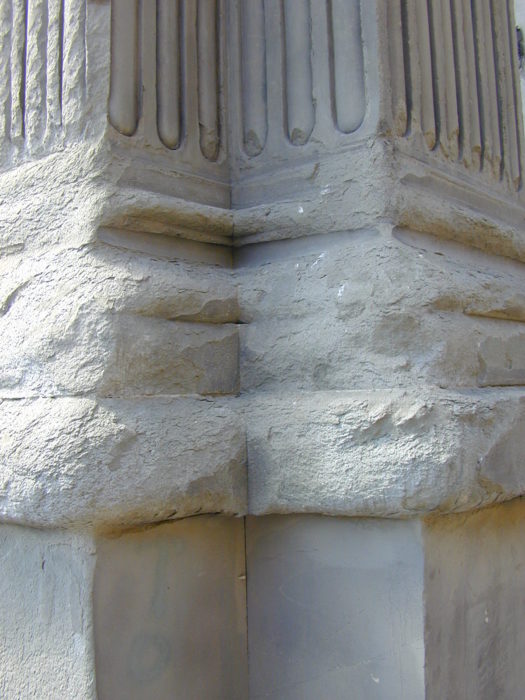
Lithotype
Pietra Serena Sandstone
Common names
Pietra Serena, Pietra Macigno, Pietra delle Colline di Fiesole, Pietra del Fossato, Pietra Bigia.
Rock classification
Sedimentary rock
Province of Florence: Fiesole, Monte Ceceri, Mugnone and Mensola Valleys, Gonfolina, Montebuoni, Greve.
This sandstone (turbiditic Macigno Formation) is dated to the Upper Oligocene – Lower Miocene. It is a quartz-feldspatic-micaceous sandstone in layers of different thickness (1- 5 meters) separated by thin levels of shales and siltites. The sandstone is classified as a lithic arcose.
Already employed in the Etruscan and Roman periods, it was used in Firenze mainly during the Renaissance, for flooring, stairways, square, columns, pilasters, cornices and other decorative architectural elements.
Prevailing silicate composition consisting of quartz, feldspar, micas; clay minerals are also present and, in small amounts, calcite.
Macroscopic description
Medium-coarse-grained sandstone, bluish-gray color when cut, it can become ocher for alteration. It is a hard, compact, non-polished, low-medium porosity rock.The Sandstone Pietra Serena, known as Pietra Bigia, has a more compact appearance and a more ochraceous color.
Microscopic description
Clay-rich sandstone with a low content of calcitic cement. Clastic granules (medium-coarse grain) consist of quartz, feldspars, fragments of metamorphic and magmatic rocks, muscovite and biotite (often transformed into chlorite).


